Warren County, Virginia
By Ingrid Spencer-via:archrecord
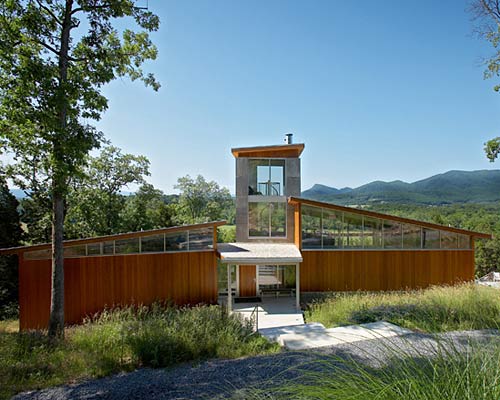
Photo © Daniel Afzal
When two scientists from the National Institutes of Health, Roxanne Fischer and Donald Orlic, went looking for architects to build them a house with a Modern aesthetic on their 24-acre property on the north fork of the Shenandoah River, they were led to Berryville, Virginia-based Carter Burton Architects. “I guess we’re known as the local architects who do Modern,” laughs principal Jim Burton. In this region, where Colonial is king, clean lines and spare spaces are not the popular flavor. “But our tastes are for architecture that is not as decorative,” says Fischer, “and as scientists we appreciate clean, organized spaces.”
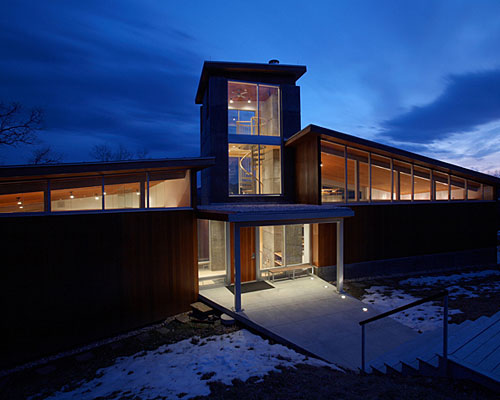
Photo © Daniel Afzal
As well as a minimal aesthetic, Fischer and Orlic had a few more requirements in mind for the house. They wanted as many energy saving strategies as possible built into the design, they wanted a home with a big, open living space where they could entertain family and friends (the couple has six children and nine grandchildren between them), and a place where they could display the ample art collection they had amassed, especially large pieces created by Fischer’s artist son, Jonathan Feldschuh. With these needs in mind, Carter + Burton principal Jim Burton, AIA, his partner Page Carter, the firm’s interior designer Michelle Timberlake and its design team set about creating the 4,000-square-foot, two-bedroom retreat. 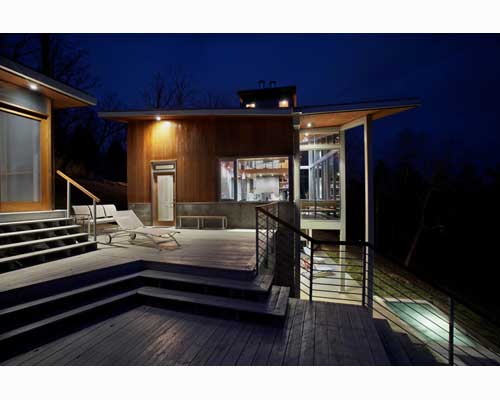
Photo © Daniel Afzal
Building the house into the sloping site, the architects sought to take advantage of and sun exposure by designing angled glass walls on the southern side, with a solid north wall as a thermal barrier with clerestory windows to allow for some northern light. On piers to allow ground water to flow under the house, the master bedroom wing and entry hall (which you arrive at as you enter the house after crossing a concrete bridge) is separated from the open kitchen/dining/living area by a stair tower. “The architects asked us if we’d like to live in a tree house or a cave,” says Fischer. “We liked both ideas.” Burton and his team created the tree-house-like spaces with the stair-tower, which became a vertical gallery for art, and serves to ventilate the home with a chimney effect. There’s also an loft/office above the main living area that gives the family that tree-house feel. Cave-like space was created in the basement level, which is carved into the hillside, flanked by earth and concrete and extending out to a terrace. 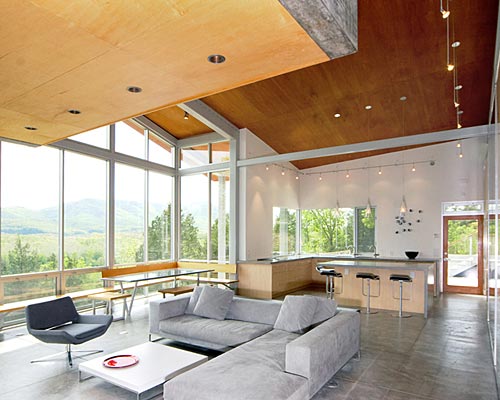
Photo © Daniel Afzal
Concrete plays a major role in this project. The poured-in-place foundation forms the base of the house and rises all the way up to countertop height—essentially becoming the kitchen counters. Retaining walls are also made of concrete, as is the tower, which recalls vernacular fire towers found in the area. Exposed interior concrete walls provide structure and balance for the concrete floor and fireplaces. A geothermal heating system keeps the floors warm through the winter months, while vertical cedar siding adds figurative warmth to the house’s ceilings and exterior. Structural stress skin roof panels spanning up to the maximum 18 feet with 4-foot cantilevers provide a thin roof profile and eliminate the need for rafters. Tiered wood terraces and decks, as well as a custom spa, connect the home to the landscape and bring even more warmth to the vertical concrete volumes. 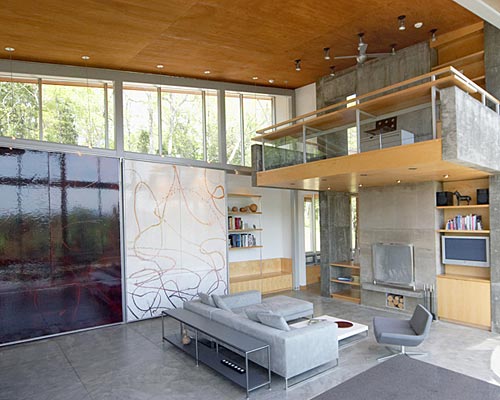
Photo © Daniel Afzal
Inside, the minimal palette of materials continues, while art becomes integral to the design. “The challenge was to keep the south side open to views, build storage into the north side, and still leave some places to show art,” says Burton. A solution was found by building in a bank of closets, mechanical space, benches, and shelves along the north circulation spine, then creating giant sliding panels that hide the storage. Two of those panels hold large paintings by Roxanne’s son. “The interior spaces are durable, and both child- and adult-friendly,” says Timberlake, interior designer for the project. “The kids can ride their bicycles in the house!” agrees Fischer. “We don’t have to worry about the surfaces.” Less than a two-hour drive from their Washington, D.C. home, Fischer and Orlic spend every weekend at the retreat, and hope to retire to it. “Every time we go out there I’m still amazed at the place,” says Fischer. “Even with an extraordinarily beautiful person you eventually get used to seeing them and stop marveling at their beauty, but not with this house. It’s changed us in many ways—expanded our vision of architecture. We now have a large collection of books about architecture in our library, and we’ve made pilgrimages to Bilbao and other places to learn more. Having this house has nurtured our minds, and it’s a wonderful place to nurture our friends and family.” 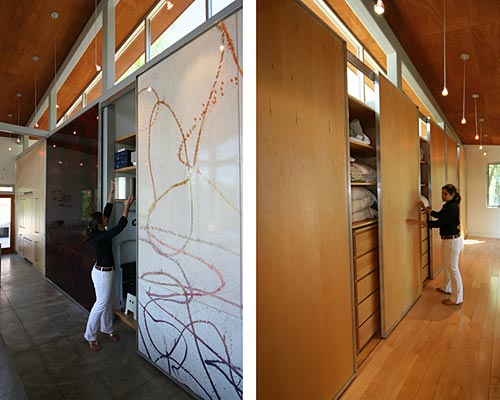
Photo © Daniel Afzal
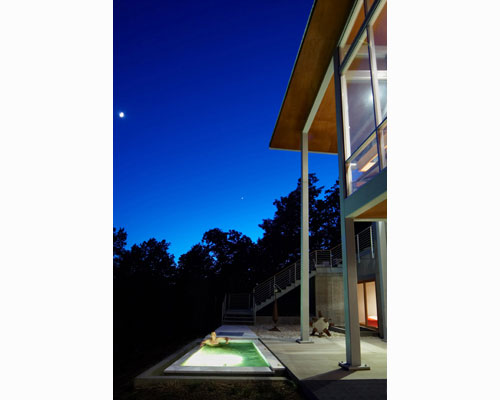
Photo © Daniel Afza

Photo © Daniel Afzal



